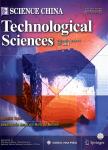Characterization and normalization factors of abiotic resource depletion for life cycle impact assessment in China
Characterization and normalization factors of abiotic resource depletion for life cycle impact assessment in China作者机构:College of Materials Science and EngineeringBeijing University of TechnologyBeijing 100124China
出 版 物:《Science China(Technological Sciences)》 (中国科学(技术科学英文版))
年 卷 期:2009年第52卷第1期
页 面:215-222页
核心收录:
学科分类:0810[工学-信息与通信工程] 07[理学] 09[农学] 0903[农学-农业资源与环境] 0805[工学-材料科学与工程(可授工学、理学学位)] 0702[理学-物理学] 0812[工学-计算机科学与技术(可授工学、理学学位)] 0713[理学-生态学]
基 金:Supported by the National Natural Science Foundation of China (Grant No. 50525413) the National Key Technology R&D Program (Grant No. 2006BAE04B09-6) the Na-tional Basic Research Program of China ("973" Project) (Grant No. 2007CB613706) Beijing Natural Science Foundation (Grant No. 2081001)
主 题:resource depletion abiotic resource categories life cycle impact assessment (LCIA) magnesium production the Pidgeon process China
摘 要:The availability of resources for economic activities differs between regions, and the importance of the resources is consequently observed to be different within regions compared to a global scale. With the current situation in Chinese mining industry and its statistic characteristics, the characterization procedures of abiotic resource in life cycle impact assessment (LCIA) have demonstrated certain limita-tions in the Chinese materials industry. The aim of this paper is to propose new characterization and normalization factors for abiotic resource depletion categories such as metals and non-renewable en- ergy resources in a Chinese context. The actual production of abiotic resources calculated by a modi- fied model is compared to the reserve base in line with the new national standard to determine char- acterization factors in equivalence units, with antimony as the reference mineral. The normalization factors are based on the total base reserves of the most important minerals in China. A case study on primary magnesium production using the Pidgeon process is used to compare LCIA results for abiotic resource categories that are between current LCIA factors and the new Chinese factors. These factors not only reflect the importance of abiotic resource with respect to region-specific resource depletion, but also can compare with the global factors.



